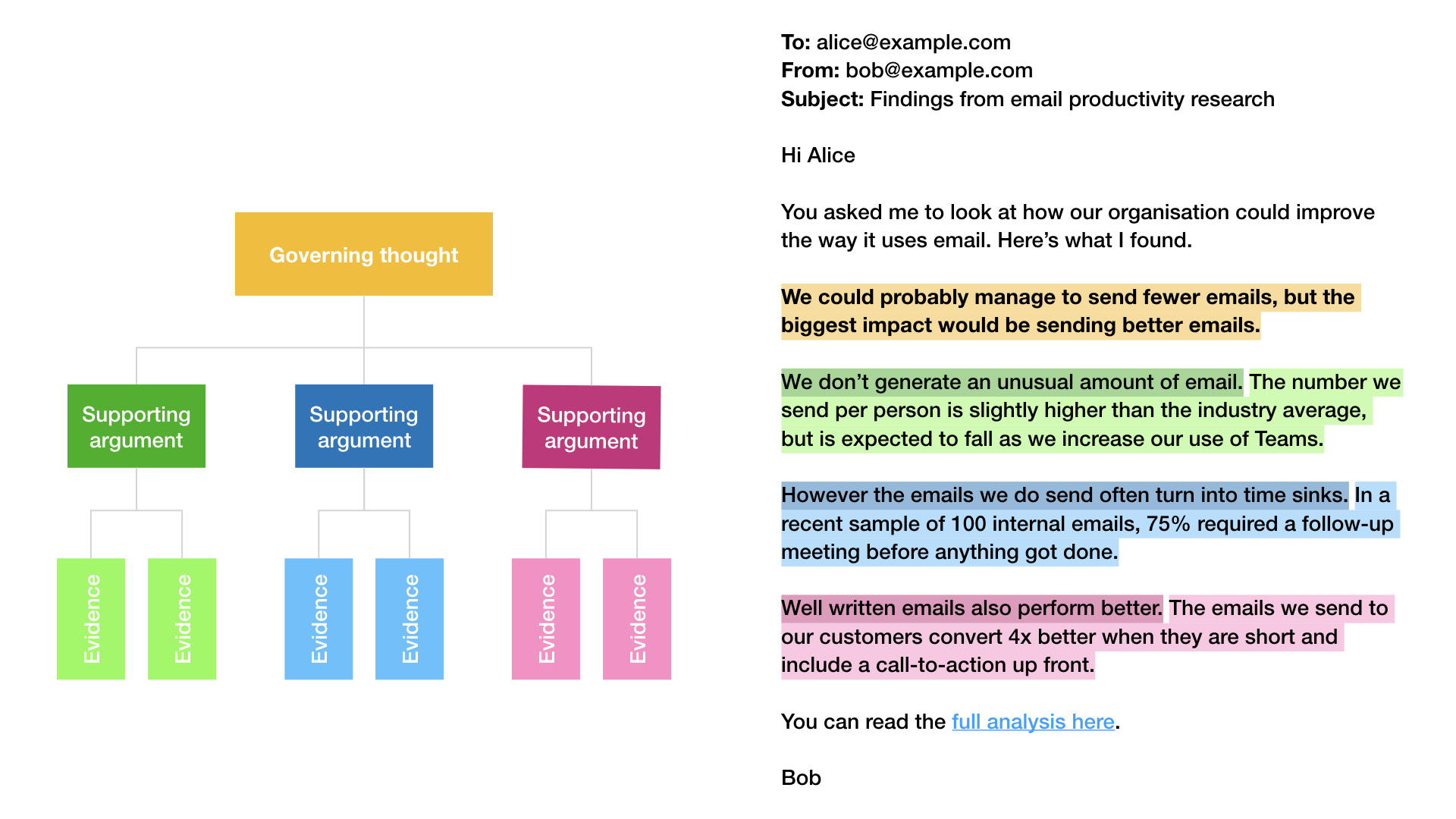Write better emails
You can't avoid sending them, so you might as well make them good.
27 June 2020

Not only is there too much email, there’s too much bad email.
Considering how many jobs involve sending emails, you’d think more organisations would train people to write them well. But instead this skill is often is sidelined as something to pick up as you go along.
The trouble is, if everyone around you is writing bad emails, following their example isn’t going to be much use.
So instead of doing that, try these two simple rules instead.
1. Be clear what you need
The emails you send are competing for attention against all the other messages piling up in people’s inboxes. You’ve got a much better chance of cutting through the mayhem if you’re clear about what you need.
- If you’d like the recipient to do something, make sure this is obvious and you’ve included everything they need to know.
- If you need them to answer a question, ask it directly (and think carefully about whether it should be open or closed).
- If your message is just FYI, state that clearly too!
2. Structure your message properly
No one enjoys reading long, rambling emails that take forever to get to the point and / or require a crazy wall to decipher.
Do everyone a favour and make your emails easy to follow.
One great framework for doing this is the pyramid principle. You start with the key point you need to convey. Then you systematically set out the supporting arguments and the evidence that backs them up.

Putting the conclusion first can feel strange if you’re not used to it. But it’s not about you. Unless what you’re sending is a screenplay, there’s no need to force the reader to wait for a big reveal at the end.
The pyramid principle doesn’t just apply to email, of course. You can use it any time you need to structure your message clearly and concisely.
(Pro tip: if you start at the top of the pyramid, each level below should answer the question “why?” or “how?”. And if you start at the base, each level above should answer the question “so what?”.)
Happy emailing!